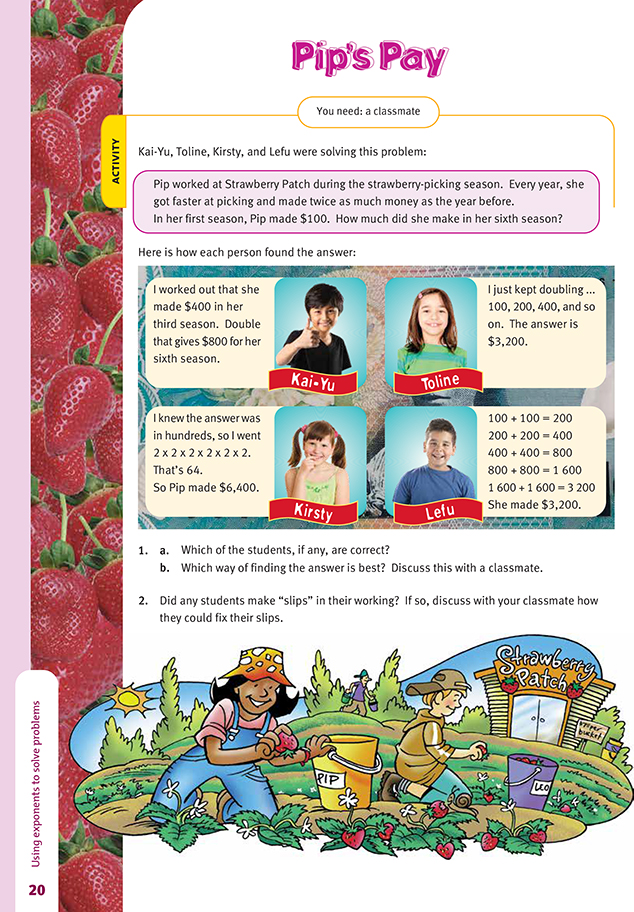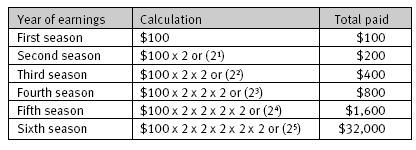This is a level 5 number link activity from the Figure It Out series. It relates to Stage 8 of the Number Framework.
A PDF of the student activity is included.
Click on the image to enlarge it. Click again to close. Download PDF (352 KB)
apply exponents to solve problems
FIO, Link, Number, Book Four, Pip's Pay, page 20
A classmate
Pip’s pay can be calculated in various ways or even acted out with paper money. However, in the ensuing shared discussion, although Kirsty incorrectly used 26, her method should be examied and the relevant exponent notation consolidated and encouraged (that is, 100 x 25).
The question involves doubling or using powers of 2, except that compared to previous activities, there is now an extra variable involved, namely $100.
You can help your students reflect on the solution and strategies used by writing the problem up on the board and having them work in small groups before they examine the options offered in the students’ book. They can then compare these options with their own thinking. Some groups may use the same methods as in the students’ book, or they may come up with different methods.
Students having difficulty could first solve a simpler problem using a smaller amount, such as $10. They could also act out the problem with play money or set out the problem in a table.
After the students in each group have completed the problem themselves, you could put the four options as speech bubbles on a large chart and have each group indicate on the chart which method they think is best. Leave a space to display other ideas that the students have developed.
Some students may have used the constant function on their calculator. Be aware that some students will be confused by which key is being held constant by the calculator. Most calculators will have the first key as the constant, for example, the 2 in 2 x 100 = = = , but some students may think the reverse.
If a scientific calculator is available in the maths corner, you could show the students how to calculate exponents with it as an extension. The exponent key is labelled xy, so to calculate $100 x 25, the students need to press 100 x 2 x xy 5 = . Some of the earlier activities in this student book can also use this process.
Answers to Activity
1. a. Toline and Lefu are correct.
b. You could argue that multiplying by 2 is faster than adding repeatedly. Both strategies are effective. Kirsty’s method, if used as 100 x 25, would also be efficient.
2. Answers will vary. Kai-Yu has not realised that doubling the pay for season 3 only gives the pay for season 4. He needs to continue doubling.
Kirsty has an extra multiplication by 2 (100 x 25 = 32 000).

